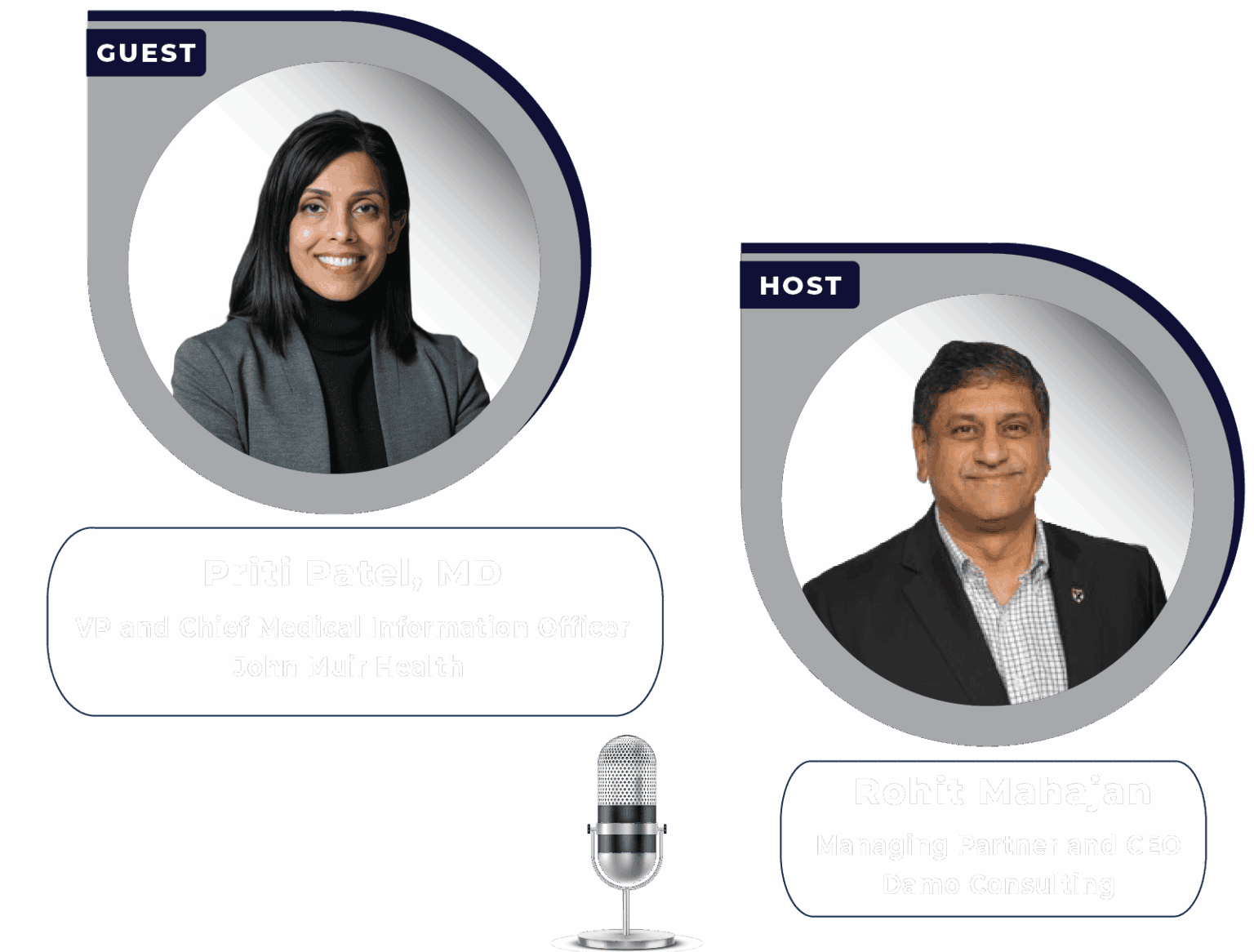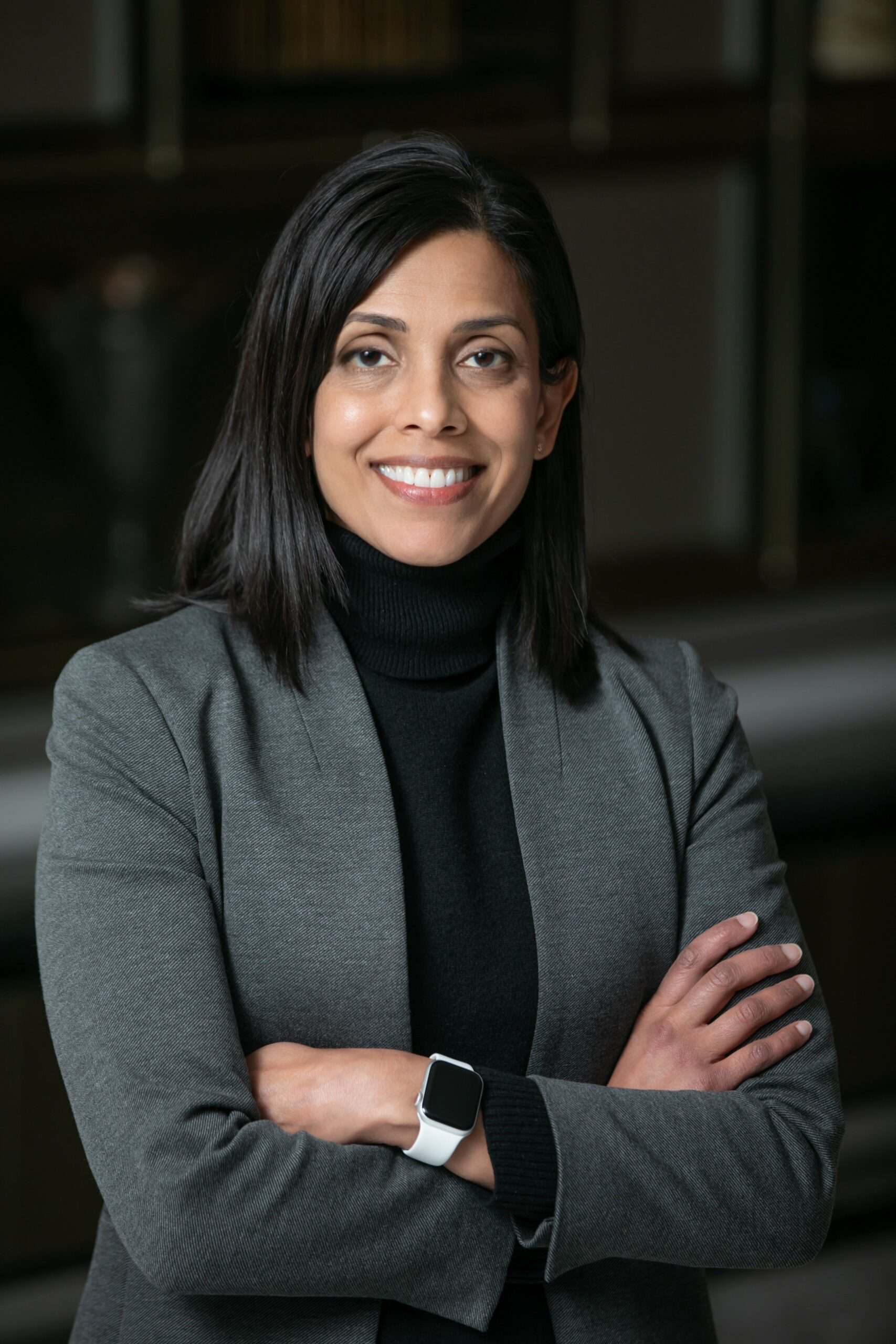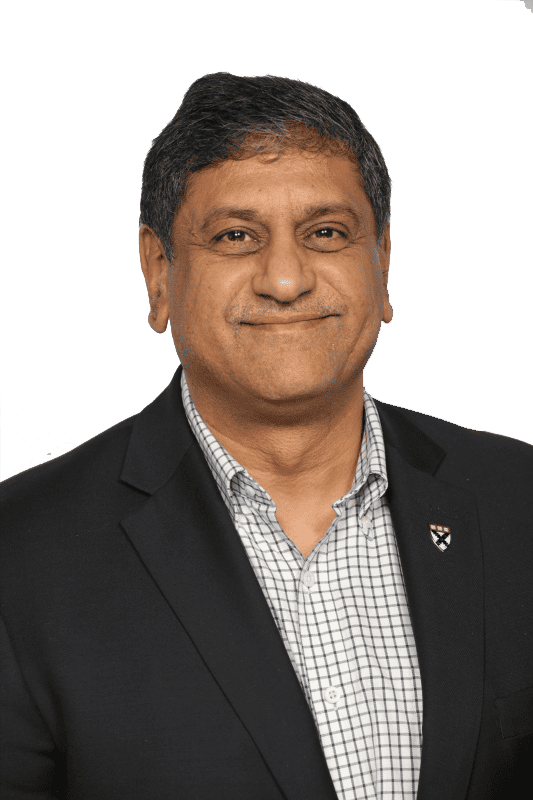Season 6: Episode #162
Podcast with Priti Patel, MD, VP and Chief Medical Information Officer, John Muir Health

Share
In this episode, Priti Patel, MD, VP and Chief Medical Information Officer at John Muir Health shares her journey from family physician to CMIO, offering insights into her 23-year tenure and the evolution of clinical informatics. She also talks about key challenges such as change management, the integration of new tools like predictive analytics, and streamlining prior authorization.
Dr. Patel discusses the growing role of informatics in healthcare and how collaboration across clinical and IT teams has driven innovation. One of the key highlights at John Muir Health, a community-based health system, is the early adoption of ambient AI technology for clinical documentation, leading to:
She also emphasizes the critical role of seamless EHR integration in driving adoption, with over 60% of providers now using the tool regularly.
Dr. Patel also outlines the organization’s enterprise-wide data strategy, including a robust data literacy initiative that’s empowering staff at all levels, starting with the C-suite, to make data-driven decisions and improve care quality and operational outcomes. She underscores that aligning digital strategies with organizational priorities—while focusing on improving the clinician and patient experience—is central to sustainable transformation. Take a listen.
Show Notes |
||||
| 01:14 | What interests you in the healthcare industry segment to become the CIO of a hospital system? | |||
| 02:47 | How long have you been in the leadership position at UMC, where is it located, and what kind of population does it serve? | |||
| 03:35 | You have done a lot of work from technology perspective to support the business needs of the hospital. You've done over 200 applications and transformed the EMR system. Would you like to share with the audience the thought process that drove those changes and what were some of those changes? | |||
| 07:47 | What do you think about your digital transformation efforts? If you could describe a few of them which have had impact on the patient population. | |||
| 08:30 | Please describe in your own, you know, way that what is digital transformation for provider systems such as yours? Where do you see it going? Some of the challenges that you might have faced and how did it actually end up impacting patients? | |||
| 11:24 | How did you manage to change the mindset of the people? How did they manage to change themselves? To adapt to this new world where technology, especially with AI and GenAI and other new technologies which are coming our way, how do you change mindsets and change behaviors and change culture over there? | |||
| 13:00 | Would you like to provide one example of how the technologies which you were implementing, and you continue to be implementing in your hospital system are accessible and usable by a variety of users, including within the hospital and outside the hospital. | |||
| 16:28 | How do you innovate? Do you involve external parties? Do you have some kind of a, you know, innovation focus department? Or is it part and parcel of everybody's, you know, kind of like daily life? | |||
| 19:24 | What are your thoughts on new technologies, especially Gen AI? Have you been experimenting with any predictive analytics or large language models? What would be your advice or thoughts to any other healthcare leaders on how to go about this journey of exploration? | |||
| 22:15 | Standing here now and looking back, if you were able to go back and change one or two things, what would you like to do differently or have done differently? | |||
Video Podcast and Extracts
About Our Guest

Priti Patel is the Chief Medical Information Officer at a John Muir Health, where she leads efforts to thoughtfully integrate emerging technologies into clinical practice. She has been at the forefront of AI adoption in healthcare, guiding her organization to become an early adopter of Ambient AI scribes in July 2023. This pioneering work has helped reduce provider documentation burden, improve clinician satisfaction, and enhance the overall patient experience through seamless integration of AI into EHR workflows.
In addition to her work in AI, Dr. Patel has developed and led a system-wide data strategy focused on advancing data literacy and cultivating a data-driven culture. Through education, engagement, and strong governance, she has helped empower clinical and operational leaders to leverage data more effectively in decision-making and performance improvement.
Dr. Patel is passionate about bridging the gap between technology and clinical care, ensuring innovation supports the needs of patients, providers, and the broader health system.
Recent Episodes
Q: Hi Priti, this is Rohit Mahajan. Thank you for joining us on The Big Unlock podcast. We are in season 6. The audience is diverse and broad. So, we are looking forward to an exciting interaction today with you, and with that, would you like to introduce yourself?
Priti: Sure. Well, that is amazing, the number of podcasts you have done. I enjoyed listening to some of your former guests. Son and I appreciate the opportunity to be here. So, my name is Priti Patel. I am a family physician and clinical informaticist.
I am serving as the Chief Medical Information Officer at John Muir Health, where I have been for 23 years now. John Muir Health is a community-based health system located in The San Francisco Bay area. We serve Contra Costa County and some of the surrounding areas. We have a two-hospital system, one behavioral health center, and over a thousand providers.
When I started 23 years ago, I started off as a primary care physician and quickly got into the administrative side of medicine and medical directorships somewhere along the journey. The electronic health record came to be, and so I started off as a super user, and then one thing led to the other. I was very involved with our enterprise-wide implementation of Epic, so that was in 2012. From there, I just continued to keep doing the same and took the position of associate CMIO, and then for the past three years, I’ve been in the CMIO role, so I am very fortunate that I get to spend most of my days at the intersection of clinical care and technology.
Q: That’s amazing, Priti. You spend so much time in this field. Tell us a little bit about how you work with your colleagues. If you are the CMIO, then you might have other colleagues in your organization who are also involved with technology. So, how do you work together as a team, and what do you think is the evolving role of the CMIO in health IT and its adoption?
Priti: I am fortunate that I have had two other CMIOs before me, and so they were critical in laying the foundation for our informatics structure. Our first CMIO was responsible for our EHR implementation. The second came in and really established a lot of committees, the governance, structures really helped optimize those, and through that entire journey we continue to grow year by year. Just the number of clinicians and physicians that have been involved in informatics is really astounding. When I started, no one even knew what the term informatics was, and we were just a part of IT now. When we add people to our team, many of them have master’s degrees in informatics. Many have done board certifications in informatics, and some have even gone through fellowships. So, we continue to grow, and IT is now part of every part of the health system. I think there’s informatics that is part of our team. Formally, our physician staff includes many informatics representatives. And then our nursing staff now has really kind of come to the table and joined us in this journey. More recently, we brought on a nursing director of informatics, and I continue to see these types of roles growing as time goes on.
Q: So, could you talk to us a little bit about how you, at your community-based health system, how do you think about aligning the digital strategies with your priorities, especially keeping your patients and employees in mind?
Priti: As a community-based health system, our focus is really on our patients, our workforce, and the quality of care that we deliver.
So those are our founding principles, and so when we think about what type of digital tools we would want to implement, we look to see, you know, how does that make them better at what they do? How does it support them? How do we elevate the care with these various tools? We are an epic organization, and so we do have an epic strategy, and that’s true of most of our core applications.
We focus on leveraging what is available to us through our major applications. And then the other key component is really driving the adoption. So, it’s not enough. To really have the application but really trying to leverage it fully is one of the things that my team does is that we identify where perhaps people aren’t really leveraging it in their workflows.
Maybe the patients could really come to know a little bit more about this. So, we have a whole team that goes out to the clinics, to the hospital, and rounds through the floors to really share a lot of that knowledge of what is available through all of our core applications. When we get to a place where our core applications cannot serve the need. Let’s say we have some special strategic initiatives, and you know, ambient AI is a perfect example of this. This is not something that was part of our Epic application. So we looked at other vendors and found one that we thought would be the best fit. This is something that we have integrated with Epic.
However, it is a freestanding application, and we do that with a number of different solutions where we are looking to align it with what we’re the outcome that we have in mind. So, we do add innovation on top of our basic core application structure.
Q: I heard you say before, when we were talking earlier, that you have a Gartner report, which got published around the Ambient Listening initiatives. And that, of course, is a business application, which a lot of health systems are embracing, and they are finding a lot of value in that. But I think you have a lot more to share with the audience on this specific implementation. So, could you talk to us about some of the three aspects I would like to bring out with you, if we can? What were some of the challenges that you faced? What do you think were some of the key success factors, and what were, I think, you measured? Results in this particular case. So, do you have any quantitative results that you could share with the audience?
Priti: We started our journey very early. This is the technology I was waiting for, as a primary care physician. I really wanted to spend more time with patients instead of interacting with the EHR and spending time on documentation. And so, for a number of years, we were looking at the early ambient solutions that were out there. And then a couple of years ago when large language models came to be. We really focused on that, and so it was early 2003 when we started to look at a variety of different vendors, and we ultimately settled on ambiance, and really, our providers had the opportunity to test it.
We did a lot of role-playing with physicians and complicated patients’ situations, and so we landed on a tool called ambiance. We implemented that very early, in July 2023. I would say that it was a very exciting time, and I think everyone was very interested in utilizing this technology. So, the adoption was easier than most technologies that we’ve tried to implement before because we had that enthusiasm and eagerness from our physician population.
The challenges were that no one had done this before and this was new territory. We were co-developing. A lot of the technology that we have today is things that have evolved over the last year and a half. And so, I think really the exciting part of this was giving people this technology and within four hours, most physicians adopted and start seeing really the benefit of it, really enhancing that human connection.
Finishing their notes on time, being able to go home on time, and not having to spend time, documenting the electronic health record. Patients have also shared with us that they enjoy the interaction that they have with their physicians because now they are face-to-face, and they’re not distracted by any technology.
So, it’s been a really positive experience for us. When we first started, we were in a non-integrated state, so the applications were side by side, and we were copy-pasting notes from the ambiance application into the electronic health record. So, the adoption had slowed because of that lack of integration.
And then once we integrated, all of a sudden, a hundred providers just came out and signed up, and we are ready to go. And you know, at this point, we have 60% of our users utilizing it. And every week our adoption continues to grow, not just with the number of people using it, but just how often they are.
When you look at certain users, some physicians use it a hundred percent of the time. We had one provider that hit the all-time record of 10,000 encounters. So, this is how we deliver care at, John Muir Health. It’s been a really exciting journey. We’ve got lots of qualitative feedback from our physicians, saying that this is something that would allow them to practice for a lot longer.
How it’s given them a light work-life balance backport of the quantitative side. So, we’ve been tracking a number of different outcomes. There are efficiency gains for sure. We’ve seen about 30 minutes of time savings in documentation. And then, when you ask our providers – how much time do you think you’re saving? They will say, we are saving two hours. And so, what that tells you is that they’re feeling less fatigued. There is a tremendous reduction in cognitive load. And so, I think there’s just so many benefits with this technology, and we’re just starting to really realize what it can do. And I foresee this continuing to improve and expand as time goes on.
Q: Yeah, it’s very interesting Priti that you said that the inflection point came when it got integrated with your, in this particular case, Epic system. So that was kind of like a good learning point. So, how did you go about building a data-driven culture? Also, talk to us a little bit about your enterprise data strategy.
Priti: In addition to AI, we have also been focusing a lot on our data strategy. About a year and a half ago, we really focused on a number of different strategic initiatives, and we wanted to really measure outcomes at all levels to be able to drive continuous improvement.
So, we have also implemented lean methodology and a daily continuous performance improvement program that everyone is doing at all levels of the organization, from leadership to the frontline. So, there was this incredible need for data to see how we are driving our operational success. And so that really laid that sort of foundational need for data.
One of the things that my team did was really try to figure out how we can support each of the users in their need for data. So, about a year ago, we launched a data literacy program. We have lots of dashboards, lots of reports, and self-serving tools but unfortunately, people don’t know how to use these tools; they’re not able to access the data that they need.
So we, starting with our C-Suite, did one-to-one training with on a variety of different reporting and analytics tools. From there, we moved to the directors and the managers. We have webinars, recorded self-service, and self-paced learning. We have open office hours now so that people can drop in.
What’s astounding is that you see the increase in the reporting tool usage, and then when we are doing our weekly report outs on all of the variety of the various strategic initiatives, everyone is now speaking with data and really sharing their outcomes and tracking that. So, it has been a really exciting journey where, a number of different initiatives came together.
And then the State of Literacy program was there to support everyone’s need for data to support, the work that they have been doing.
Q: I am sure in this journey, when you try to do cultural changes there is always change management, which comes into play, and then I’m sure you are adept at balancing your innovation efforts with the clinician or the patient design. So, talk to us a little bit about how do you drive innovation, change management, and what are some of the things that you are seeing are working or not working in that space?
Priti: Yeah, change management is by far the most important component. When I think about what I do every day, even as a position, I was a change management agent.
And then on the IT and informatics side that skill comes in very handy. Even if you have the best technology, the technology that you think is really going to support the clinician or the business owner, I think what happens is not everyone approaches that technology the same way, and they need support in different ways.
They need to understand why they should use it and how it will help them. That is one of the things that we do as informaticists is we really try to bridge the workflow with technology. If technology is designed well, it is very easy to do. If it is not really designed with the end user in mind, then that’s where, the change management becomes even more challenging.
So, I think that change management is really key to adoption. Adoption is really key to seeing the benefits of technology so that connection is really key.
Q: As we move on to more discussions around AI and GenAI, what are you thinking could be the next initiatives? You have a very successful one already underway, and things are changing fast around us. As you know, everyone is talking about Gen AI. In fact, we have a webinar coming up in the next two weeks on Agentic AI, and I was surprised by the number of registrations for that. It seems to be very topical and of great interest. So, how are you thinking about new AI initiatives and Gen AI in your organization?
And I know you might be early on how you are thinking about the policies and the governance aspects as well.
Priti: Yeah, this is a very exciting time, and we, too, are excited about the AI agents where we have started with GenAI. I mean, our first application was the ambient scribe. But we have also been utilizing Gen AI to help draft responses back to messages that come from patients.
So, it really helps reduce the documentation burden. We are thinking about leveraging it on the inpatient side for nurses to help create care plans. In about a month, we are going to start a pilot to really look at how GenAI can and natural language processing can really summarize the medical record.
So, our inpatient physicians have to spend a lot of time looking through the chart to really understand why the patient might be in the hospital. And so, there are some great tools that might help summarize and really raise up some very pertinent points to care that’s a pilot that we’re really excited about.
There are a number of different applications on the business side, so when you think about doing prior authorization and letters for responses to denials. Those are really appealing use cases where I think a lot of people spend time in this paperwork, administrative back and forth.
And this is where gen AI really has a great application. As I mentioned, we’re on this data-driven journey and teaching people how to leverage these self-service tools. There is quite the learning curve, you know, on how to sort of set up your query, right? And that’s where natural language processing and gen AI may be very helpful.
So, there are some tools that we’ve been looking at to say, can the user just speak out their query. So that then the data analysis is done for them and then they can more easily utilize it. So that is really exciting. We have been doing a lot in predictive analytics, so that’s kind of the next level. I mean, having the data and the EHR is one thing, but now, doing things with it, that is where the magic really happens. So, we have a number of different predictive analytics tools live today. One that helps predict readmissions. We have another one that has been in play for a very long time, really predicting the high-risk patients, those who are at risk for clinical deterioration in the hospital.
So, that’s been great at identifying those who may be developing sepsis or may need a higher level of care. We have a great tool that helps us detect steps stroke early and really mobilize the team. And that has really improved our stroke care. So, I think there’s so many applications and tools.
It is almost like we have so many solutions that how do we implement these fast enough in order to, You know, really take advantage of everything that is out there. And then, of course agentic AI is coming, and that is something that we’re very excited about, too. So, I’ve had a chance to see a few demos, and it was very compelling. So yeah, we’ll have to see what happens over the next six months.
Q: That’s amazing. So, I think as we are heading to the close of the podcast, Priti, are there any other thoughts or information you would like to share with the audience before we close?
Priti: Yeah, this is a very exciting time to be part of this. I think we’ve all kind of noticed that there’s something different in the last year. And I would say that I am really interested in everything that’s out there and trying to find a solution that will fit our problems. That is always a challenge and when I think about what would really make a big difference for us is finding solutions that really solve problems that we have. I am someone who really enjoys technology, and so everything’s exciting, but how do you figure out what’s the one that’s really going to make a big difference and really improve patient care and experience for our clinicians?
Subscribe to our podcast series at www.thebigunlock.com and write us at [email protected]
Disclaimer: This Q&A has been derived from the podcast transcript and has been edited for readability and clarity.
About the host
Paddy is the co-author of Healthcare Digital Transformation – How Consumerism, Technology and Pandemic are Accelerating the Future (Taylor & Francis, Aug 2020), along with Edward W. Marx. Paddy is also the author of the best-selling book The Big Unlock – Harnessing Data and Growing Digital Health Businesses in a Value-based Care Era (Archway Publishing, 2017). He is the host of the highly subscribed The Big Unlock podcast on digital transformation in healthcare featuring C-level executives from the healthcare and technology sectors. He is widely published and has a by-lined column in CIO Magazine and other respected industry publications.

Ritu M. Uberoy has over twenty-five years of experience in the software and information technology industry in the United States and in India. She established Saviance Technologies in India and has been involved in the delivery of several successful software projects and products to clients in various industry segments.
Ritu completed AI for Health Care: Concepts and Applications from the Harvard T.H. Chan School of Public Health and Applied Generative AI for Digital Transformation from MIT Professional Education. She has successfully taught Gen AI concepts in a classroom setting in Houston and in workshop settings to C-Suite leaders in Boston and Cleveland. She attended HIMSS in March 2024 at Orlando and the Imagination in Action AI Summit at MIT in April 2024. She is also responsible for the GenAI Center of Excellence at BigRio and DigiMTM Digital Maturity Model and Assessment at Damo.
Ritu earned her Bachelor’s degree in Computer Science from Delhi Institute of Technology (now NSIT) and a Master’s degree in Computer Science from Santa Clara University in California. She has participated in the Fellow’s program at The Wharton School, University of Pennsylvania.

Rohit Mahajan is an entrepreneur and a leader in the information technology and software industry. His focus lies in the field of artificial intelligence and digital transformation. He has also written a book on Quantum Care, A Deep Dive into AI for Health Delivery and Research that has been published and has been trending #1 in several categories on Amazon.
Rohit is skilled in business and IT strategy, M&A, Sales & Marketing and Global Delivery. He holds a bachelor’s degree in Electronics and Communications Engineering, is a Wharton School Fellow and a graduate from the Harvard Business School.
Rohit is the CEO of Damo, Managing Partner and CEO of BigRio, the President at Citadel Discovery, Advisor at CarTwin, Managing Partner at C2R Tech, and Founder at BetterLungs. He has previously also worked with IBM and Wipro. He completed his executive education programs in AI in Business and Healthcare from MIT Sloan, MIT CSAIL and Harvard School of Public Health. He has completed the Global Healthcare Leaders Program from Harvard Medical School.

Paddy was the co-author of Healthcare Digital Transformation – How Consumerism, Technology and Pandemic are Accelerating the Future (Taylor & Francis, Aug 2020), along with Edward W. Marx. Paddy was also the author of the best-selling book The Big Unlock – Harnessing Data and Growing Digital Health Businesses in a Value-based Care Era (Archway Publishing, 2017). He was the host of the highly subscribed The Big Unlock podcast on digital transformation in healthcare featuring C-level executives from the healthcare and technology sectors. He was widely published and had a by-lined column in CIO Magazine and other respected industry publications.
Never miss an episode
The only healthcare digital transformation podcast you need to subscribe to stay updated.
The Big Unlock Podcast is hosted by Damo Consulting Inc. For information, visit: www.damoconsulting.net Terms of Use | Privacy Policy
© 2025 The Big Unlock Podcast. All Rights Reserved.
Stay informed on the latest in digital health innovation and digital transformation